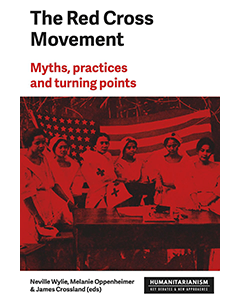
Abstract
This book offers new insights into the history of the Red Cross Movement, the world's oldest humanitarian body originally founded in 1863 in Geneva, Switzerland. Incorporating new research, the book reimagines and re-evaluates the Red Cross as a global institutional network. It is the first book of its kind to focus on the rise of the Red Cross, and analyses the emergence of humanitarianism through a series of turning points, practices and myths.
The book explores the three unique elements that make up the Red Cross Movement: the International Committee of the Red Cross; the International Federation of Red Cross and Red Crescent, formerly known as the League of Red Cross Societies (both based in Geneva); and the 191 national societies. It also coincides with the centenary of the founding of the International Federation of the Red Cross and Red Crescent, formed in May 1919 in the aftermath of the First World War. The book will be invaluable for students, lecturers, humanitarian workers, and those with a general interest in this highly recognizable and respected humanitarian brand. With seventeen chapters by leading scholars and researchers from Europe, the UK, Australia, New Zealand and America, the book deserves a place on the bookshelves of historians and international relations scholars interested to learn more about this unique, complex and contested organisation.